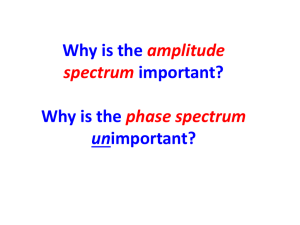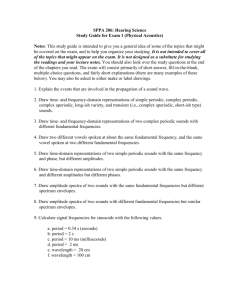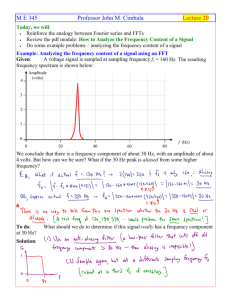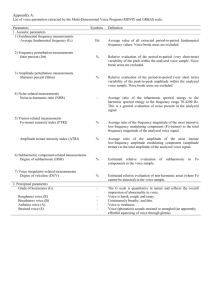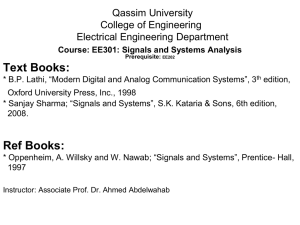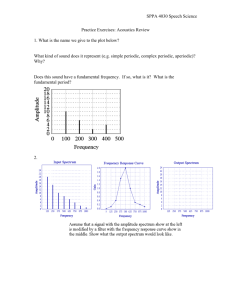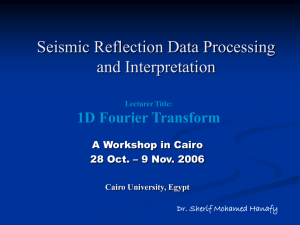UNIVERSITY OF CALIFORNIA, LOS ANGELES
advertisement
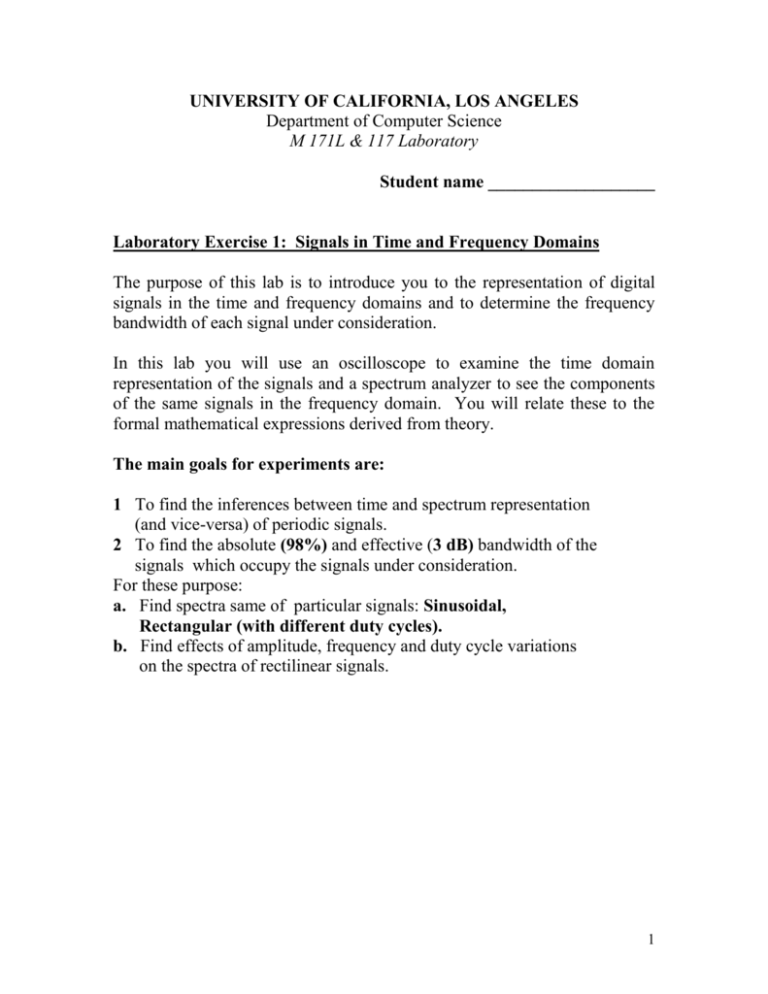
UNIVERSITY OF CALIFORNIA, LOS ANGELES Department of Computer Science M 171L & 117 Laboratory Student name ___________________ Laboratory Exercise 1: Signals in Time and Frequency Domains The purpose of this lab is to introduce you to the representation of digital signals in the time and frequency domains and to determine the frequency bandwidth of each signal under consideration. In this lab you will use an oscilloscope to examine the time domain representation of the signals and a spectrum analyzer to see the components of the same signals in the frequency domain. You will relate these to the formal mathematical expressions derived from theory. The main goals for experiments are: 1 To find the inferences between time and spectrum representation (and vice-versa) of periodic signals. 2 To find the absolute (98%) and effective (3 dB) bandwidth of the signals which occupy the signals under consideration. For these purpose: a. Find spectra same of particular signals: Sinusoidal, Rectangular (with different duty cycles). b. Find effects of amplitude, frequency and duty cycle variations on the spectra of rectilinear signals. 1 Exercise #1: Theory (Include with protocol) A periodic signal satisfies the condition: S ( t + T ) = S ( t ) ; - < t < +. The smallest constant value T that satisfies this equality is called the “period” of the signal. A periodic signal S( t ) can be expressed by a Fourierseries if it is continuous and finite within the signal period. A rectangular wave is a periodic signal where the signal has a value of +A for some continuous interval during the period (the “mark”), and has a value of -A for the remainder of the period (the “space”). The “duty cycle” d of the rectangular wave is defined as the length of the positive interval divided by the period. 1) Draw plots of amplitude versus time for the following rectangular signals with period T and amplitude A: (a) Duty cycle d = 50% (also called a “square wave”) (b) Duty cycle d = 25% (a) S( t ) (b) S( t ) A A T -A 2T t T 2T t -A 2 Exercise #1: Theory (continued) (Include with protocol) 2) The Fourier series for the square wave signal in (a) is: 3) The Fourier series for the rectangular signal in (b) (duty cycle d = 25%) is: The effective amplitude spectrum of a signal is built from the RMS voltages of each frequency represented in the Fourier series for that signal. 4) If the amplitude of each signal is Amax = 2V, draw the effective amplitude spectra (through the 8th harmonic) for functions (a) and (b) above. (a) Arms (b) Arms f f 3 Exercise #1: Theory (continued) (Include with protocol) 5) How does the effective amplitude spectrum of a signal change when we add a time shift or a phase shift to the signal? 6) What are the differences between the amplitude spectrum and the effective amplitude spectrum? 7) If the amplitude of the signals in (a) and (b) above is A = 2V, and each signal is sent to a 1 Ohm load, what is the spectral power of each signal? Calculate the spectral power by subtracting the DC offset power from the time-domain power. The spectral power of a periodic signal is defined as the sum of the power of the sinusoidal components of its Fourier series (the square of their RMS voltages divided by the impedance of the load). It is equal to the power of the signal in the time-domain minus the power of the signal’s DC offset. 8) How do we define the effective bandwidth of a periodic signal? 4 Exercise #1: Theory (continued) (Include with protocol) 9) How do we define the absolute bandwidth of a periodic signal? What are the absolute bandwidths of the signals in (a) and (b) above? (Use the calculations in the lecture notes.) 10) Calculate theoretical predictions for Parts A, B, and C in the “Raw Data” section of this lab. Put these values into the shaded boxes of the data sheets ( ). 5
